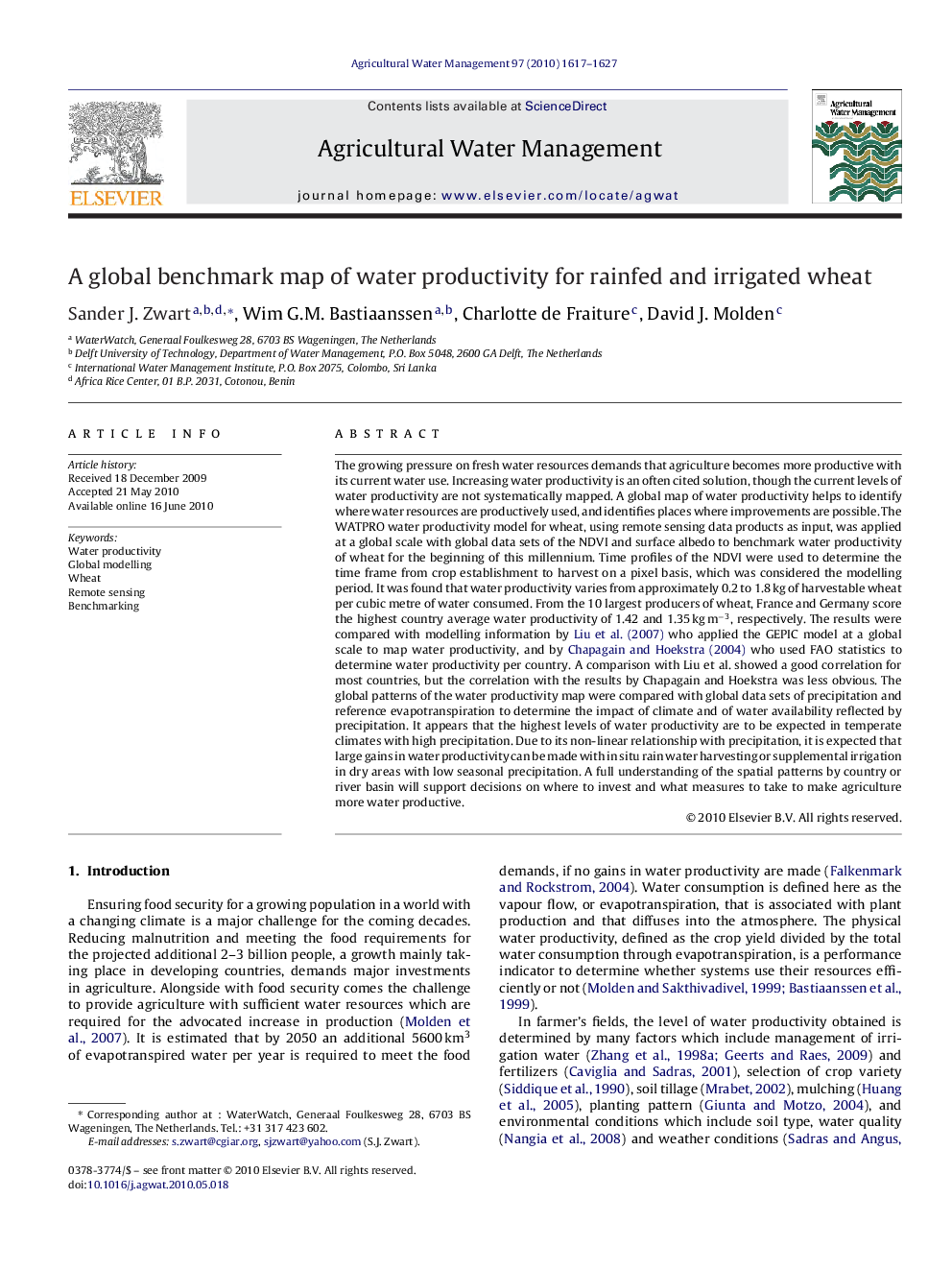| کد مقاله | کد نشریه | سال انتشار | مقاله انگلیسی | نسخه تمام متن |
|---|---|---|---|---|
| 4479724 | 1316455 | 2010 | 11 صفحه PDF | دانلود رایگان |

The growing pressure on fresh water resources demands that agriculture becomes more productive with its current water use. Increasing water productivity is an often cited solution, though the current levels of water productivity are not systematically mapped. A global map of water productivity helps to identify where water resources are productively used, and identifies places where improvements are possible. The WATPRO water productivity model for wheat, using remote sensing data products as input, was applied at a global scale with global data sets of the NDVI and surface albedo to benchmark water productivity of wheat for the beginning of this millennium. Time profiles of the NDVI were used to determine the time frame from crop establishment to harvest on a pixel basis, which was considered the modelling period. It was found that water productivity varies from approximately 0.2 to 1.8 kg of harvestable wheat per cubic metre of water consumed. From the 10 largest producers of wheat, France and Germany score the highest country average water productivity of 1.42 and 1.35 kg m−3, respectively. The results were compared with modelling information by Liu et al. (2007) who applied the GEPIC model at a global scale to map water productivity, and by Chapagain and Hoekstra (2004) who used FAO statistics to determine water productivity per country. A comparison with Liu et al. showed a good correlation for most countries, but the correlation with the results by Chapagain and Hoekstra was less obvious. The global patterns of the water productivity map were compared with global data sets of precipitation and reference evapotranspiration to determine the impact of climate and of water availability reflected by precipitation. It appears that the highest levels of water productivity are to be expected in temperate climates with high precipitation. Due to its non-linear relationship with precipitation, it is expected that large gains in water productivity can be made with in situ rain water harvesting or supplemental irrigation in dry areas with low seasonal precipitation. A full understanding of the spatial patterns by country or river basin will support decisions on where to invest and what measures to take to make agriculture more water productive.
Journal: Agricultural Water Management - Volume 97, Issue 10, October 2010, Pages 1617–1627